|
|
美術館: Old prints about hemp farming
Old prints about hemp farming きせる
きせる 浮世絵
浮世絵 長野県の美麻村
長野県の美麻村 Hemp and sumo
Hemp and sumo 麻の葉
麻の葉   Other hemp images
Other hemp imagesSee also:
|
 Woodcuts of Hemp (asa)
Woodcuts of Hemp (asa)from Nômin Seikatsushi Jiten (Historic Encyclopedia of Farmer's Lives)
The Nômin Seikatsushi Jiten (Historic Encyclopedia of Farmer's Lives) where these old prints here were found had the following to say about hemp and its applications:
|
I. Kaze ire (ventilating)

|
II. Asa kiri (hemp harvest)
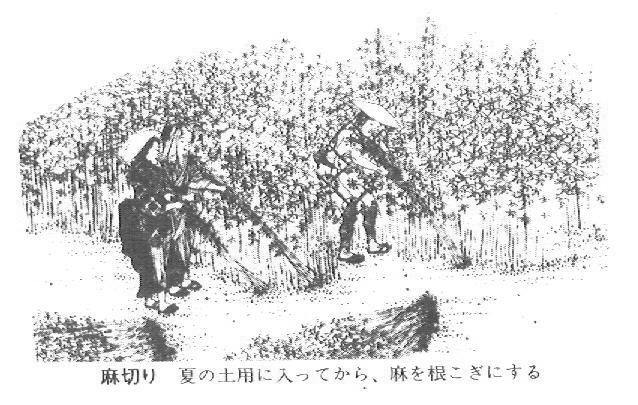
|
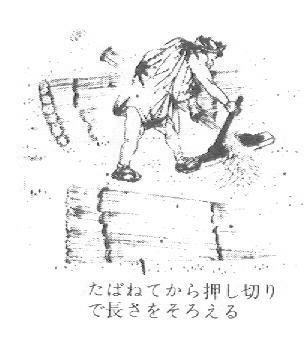
III. Roots and tops are cut off
|

IV. Niru (boiling)
|
V. Hosu (drying)
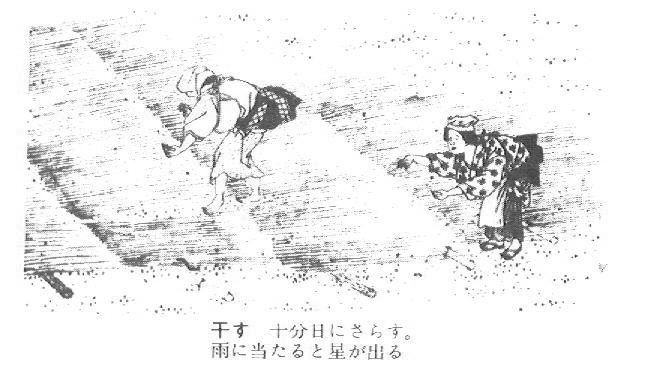
|
VI. Arau (washing)
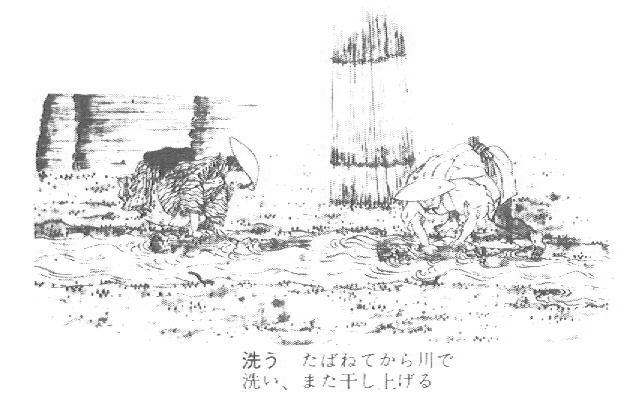
|

VII. Tokomawashi (fermenting)
|
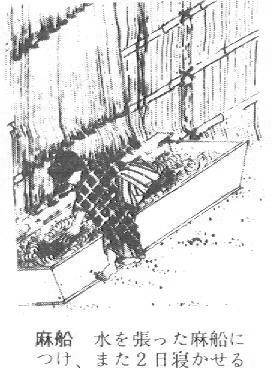
VIII. Asafune (hemp boat)
|
IX. Asahagi (peeling)
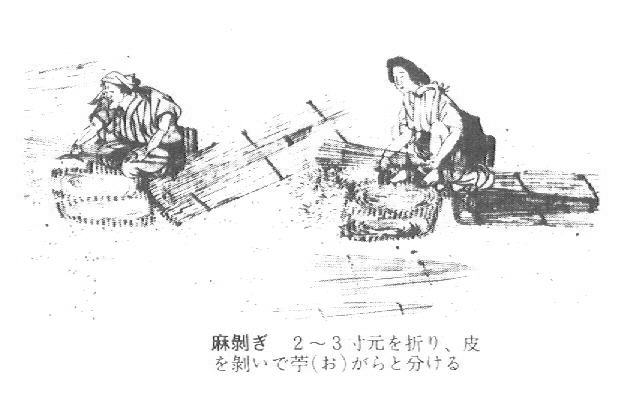
|
X. Hosu (Drying)
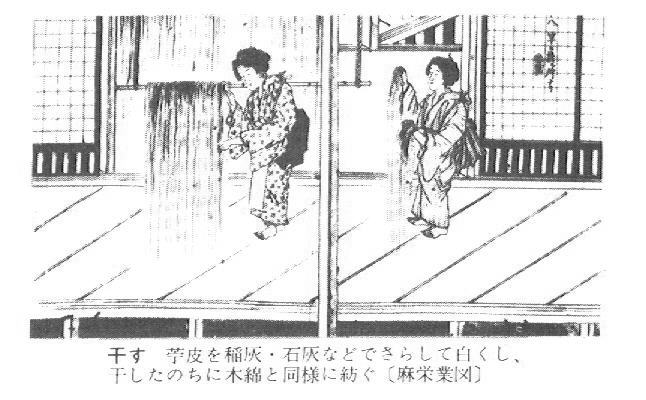
The same "cottonization" process was developed industrially in Europe only in the early 20th century.
|

Hemp offering
"At harvest time farmers offered some hemp to the gods to express their gratitude."
|